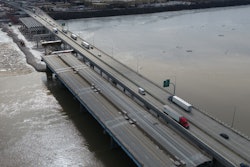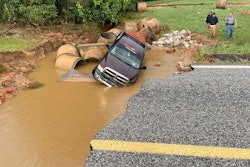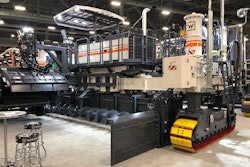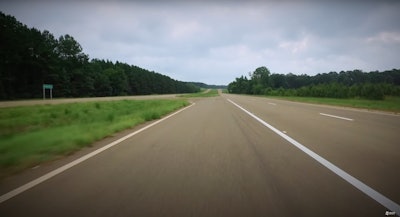
Mississippi has become the latest state to fall in love with the J-turn.
The state’s Department of Transportation touts the alternative intersection’s reduction in crashes while keeping traffic flowing better that conventional intersections.
The J-turn is most often planned for multi-lane rural and suburban highways where making a left turn or going straight across traffic is dangerous, and adding stoplights would impede highway traffic flow.
“J-turns can reduce injury crashes by more than 40% and fatal crashes by 70%,” says MDOT.
How it works
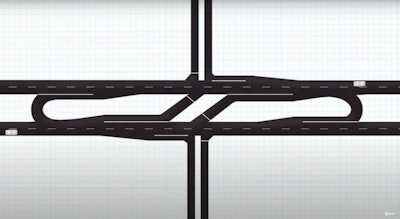 A J-turn intersectionMississippi DOT
A J-turn intersectionMississippi DOT
The J-turn is designed to reduce the number of contact points a driver faces. It does require them to drive farther than a traditional intersection, but MDOT says it eliminates them having to wait for a gap in traffic to cross over to the left lanes and then enter those lanes safely.
MDOT has used J-turns in areas with severe crash histories and seen drastic reductions in fatalities and injuries, it says. It also says J-turns are a cost-effective way to improve intersections.
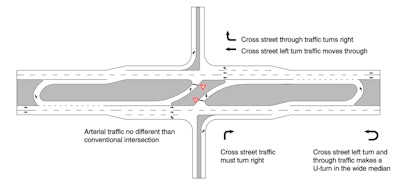 How to do a J-turnFHWA
How to do a J-turnFHWA
J-turn origins
The J-turn in the U.S. started showing up in the mid-1980s, with Maryland and North Carolina as two of the pioneering states, according to the “Restricted Crossing U-turn Intersection Information Guide” issued by the Federal Highway Administration in 2014.
The guide says the first known J-turn was built by the Maryland State Highway Administration on U.S. 15 near the Pennsylvania border.
As of 2014, there were about 50 J-turn intersections known to have been installed in the U.S. Along with North Carolina and Maryland, the guide lists sites in Alabama, Louisiana, Michigan, Minnesota, Missouri, Ohio and Texas.
The FHWA says J-turn studies have shown a 40% reduction in intersection travel time and up to a 63% reduction in crashes causing death or injury.
Check out this video below by MDOT on its adoption of the J-turn:


